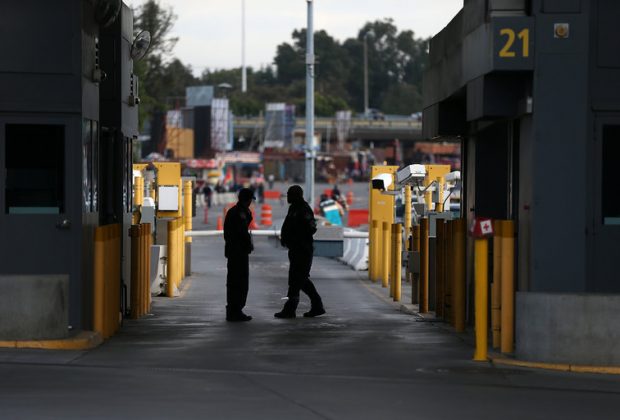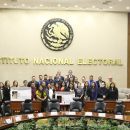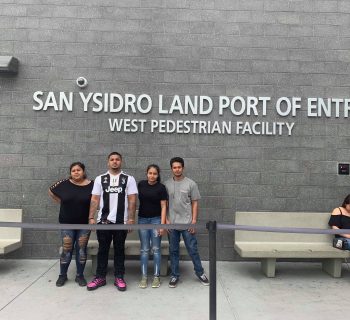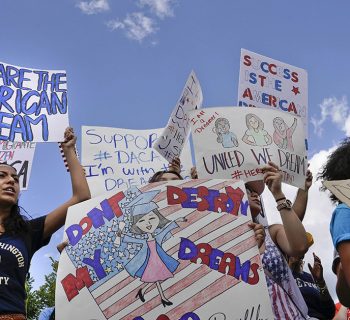LUKEVILLE, Ariz. — Each year, Mexican drug cartels rake in billions of dollars in profits from the sale of heroin, methamphetamines and other drugs in the United States. The money has to make its way south somehow.
Though the cartels sometimes hire legitimate companies to buy goods like silk and ink cartridges and export them to Mexico, where they are sold for pesos, a more common method is to simply pay someone to drive the cash over the border.
President Trump has talked frequently about “bad hombres” streaming in from Mexico. But it is the flow of money going from north to south — a product of Americans’ voracious appetite for illicit drugs — that officials say is an equal part of the problem.
“It’s the money and the guns that have enabled the cartels to obtain the power they have,” Scott Brown, special agent in charge of Homeland Security Investigations in Phoenix, part of Immigration and Customs Enforcement, said in an interview. “I’m a firm believer that if we can keep the cartels from getting their profits, over time, that has a lot more impact than seizing the drugs.”
A few weeks ago, customs agents here, on separate operations, stopped two Mexican men on their way to Mexico with nearly $60,000 hidden in secret compartments in their cars. A few days later, they stopped a 43-year-old Mexican woman heading into Mexico with several assault rifles, a handgun, multiple ammunition magazines, two weapon scopes and 6,000 rounds of ammunition.
“I wish I had a unit dedicated to checking vehicles going south for guns and money,” Pete Bachelier, a United States Customs and Border Protection officer who is in charge of the local port of entry, said in an interview. “I just don’t have the manpower.”
Since 2008, customs officers at ports of entry along the southern border have seized about $300 million in cash heading into Mexico in commercial vehicles and passenger cars, according to statistics from Customs and Border Protection.

Traffic heading into Mexico from San Ysidro. Mexican officials have long complained about the flow of guns and money entering the country from the north. CreditDavid McNew/Agence France-Presse — Getty Images
Customs officers and border patrol agents say that money, which was found while following up on tips or stumbled upon during random stops, represents a fraction of the actual total. So far this year, officials said, seizures of southbound cash are up 48 percent through March: $18.6 million compared with $12.6 million over the same period last year. The officials said the increase was probably because the agency was able to deploy more officers to look for money and guns amid a decline in apprehensions of undocumented migrants on the border.
“We need to get our own house in order,” said Michael Shifter, president of Inter-American Dialogue, a think tank based in Washington. “Our appetite for drugs in the country is having an impact on the south and driving people from those countries.”
So far, Mr. Trump’s response to the drug and immigration crisis has been narrow in scope.
In addition to his focus on building a border wall, he has pledged to hire 15,000 additional border and deportation agents to round up and deport undocumented immigrants entering or already in the United States.
But several Mexican security experts and former government officials say Trump administration actions on border security and immigration are too limited.
“Border security is a shared responsibility,” said Alejandro Hope, a security consultant and former analyst with Cisen, the Mexican intelligence agency. “The United States is not going to be safer by scapegoating Mexico.”
Eduardo Guerrero-Gutierrez, a security analyst with Lantia Consultores, a consulting firm based in Mexico City, said the deportation of thousands of people to towns along the border could make both the United States and Mexico less safe.
“We think all these new people on the border will contribute to more violence,” he said. “All of these people that are deported — Mexicans and Central Americans, standing around with nothing to do — are potential recruits for cartels.”
Thwarted Border Crossings

For Mexican officials, the flow of guns and money that enter the country from the north has been a longstanding complaint.
About 70 percent of the firearms seized in Mexico from 2009 to 2014 were traced back to the United States, amounting to over 73,000 guns, according to a 2016 report from the federal Bureau of Alcohol, Tobacco, Firearms and Explosives.
And in many ways, money presents a bigger problem than the guns.
According to the Treasury Department, drug trafficking generates an estimated $64 billion annually from sales in the United States. In addition to allowing drug cartels and gangs to buy weapons, the money generated from such drug sales has been used to bribe and corrupt Mexican and Latin American law enforcement, judges, immigration and customs officers.
Law enforcement officials in the United States have not been spared as hundreds of state and federal officials have been arrested and convicted of taking millions in bribes from drug cartels and human smugglers.
“What the general public hears from politicians, the media, is, let’s stop the drug, let’s stop the poison that’s killing our children,” said Doug Coleman, special agent in charge of the Drug Enforcement Administration office in Phoenix. “For the law enforcement community, the money, the drugs, it’s all connected.”
The money travels in many ways, including by mail, in boxes full of money orders worth hundreds of thousands of dollars and, in bundles along highways, stuffed in suitcases or in hidden compartments, much like the drugs that come north. Sometimes, it goes from one country to the other in the form of payments and deposits that would be legitimate but for the fact that they are made with drug profits.
In 2015, a husband and wife in Douglas, Ariz., were indicted on charges of fraud, forgery and money laundering. D.E.A. agents uncovered evidence that suggested the couple had used the transportation company they owned to launder money for a marijuana and cocaine trafficker in charge of a busy drug-smuggling route through Agua Prieta, Mexico, just on the other side of the border.
During their investigation, D.E.A. agents found 16 commercial trucks, 54 trailers, 11 cars, boats, homes and 12 bank accounts in the couple’s name. Some $8.2 million, much of it believed to be proceeds from illegal drug sales in the United States, entered the accounts over four years, in deposits that generally did not exceed $10,000 to evade scrutiny from banks and the Internal Revenue Service. Almost all of the money was withdrawn and a lot of it was deposited in bank accounts held by the wife in Mexico.
Ultimately, the couple pleaded guilty to lesser charges, underscoring what federal agents say is the difficulty in proving the connection between the money and the drugs when cases go to court.
Using multiple bank accounts to deposit and then withdraw drug profits is a common money laundering scheme, and it is just one way drug trafficking organizations move their money.
The more common way, though, is through trade.
Mexico is Arizona’s largest trading partner, so there are plenty of opportunities. Often, a money broker hired by the cartels will buy goods from an export company based in the United States that will then be shipped to Mexico, where they will be legally sold.
Along the border, federal, state and local law enforcement officers work together to try to stop drugs from coming in and, sometimes, to keep money and guns from flowing into Mexico.
One such multiagency law enforcement effort, here in Lukeville, is Operation Chainlink. The effort, led by the Department of Homeland Security and including park rangers and members of state and local law enforcement, is tasked with stopping illicit goods, mostly cash and guns, from flowing into Mexico.
During the most recent operation here, the officers and special agents stopped several suspicious vehicles and questioned the occupants, including one man driving a Ford Escort whom agents had seen drop a bag on the side of the road. They searched his car but came up empty.
“But we’ll keep an eye on him and flag him if he comes through on foot or driving another vehicle,” said Mr. Bachelier, the port director. “We know he’s up to no good, but we just didn’t catch him with anything this time.”
Ron Nixon reported from Lukeville and Mexico, and Fernanda Santos from Phoenix. Paulina Villegas contributed reporting from Mexico City.
Get politics and Washington news updates via Facebook, Twitter and in the Morning Briefing newsletter.







